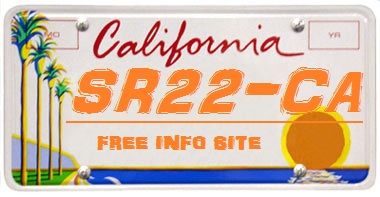
When you’re looking to buy, sell or know more about a particular gem , a certification report is the best starting point. A certification can help you understand a gem’s cut, clarity, carat, clarity and other qualities — all important when determining how much a diamond or other precious gem is worth. Here’s a quick guide to the most trusted gem certification institutes and how they evaluate a diamond , colored diamond , ruby , sapphire or emerald. Two certified gems from the Diamond & Estate Trust collection: a diamond, left, and a sapphire. Gemological Institute of America (GIA) The GIA is the most well-known institute for grading and evaluating diamonds , colored stones and pearls. A nonprofit institute, GIA has been providing reports on the quality of diamonds, colored stones and pearls since 1931. It’s considered to have the highest standards of all the major gem certification agencies. What you’ll find in a GIA report The GIA objectively compares and evaluates diamonds using the 4 C’s : carat, color, clarity and cut. It developed the 4C system in the 1940s, and has been using it ever since. The GIA’s color grading scale for diamonds ranges from D to Z, with D, the closest to colorless, being the most coveted grade. The GIA determines how many blemishes and inclusions a diamond has on a scale of flawless (most desirable) to included (least desirable). The institute grades cut based on how a diamond reflects light, the dispersion of that light, and the how much a diamond sparkles when it’s moved. You’ll also find grading for polish, symmetry and fluorescence in a GIA report. The GIA grades colored gems including colored diamonds , rubies and sapphires based on weight, facet angles and proportions. It also determines the gem’s origin and whether the gem was heated, or artificially treated, to achieve its color. The GIA has a separate color grading system for colored diamonds that ranges from vivid (most valuable) to light (least valuable). A GIA report also includes a diamond’s shape, measurements, weight, depth percentage, table percentage, girdle thickness, culet size, and general comments about the gem that was evaluated. A certified pear shaped diamond, left, and a certified ruby, both from the Diamond & Estate Trust collection. American Gem Society (AGS) The AGS is a nonprofit trade organization founded in 1934. Its membership includes fine jewelers, jewelry designers and jewelry suppliers throughout the U.S. The AGS has been certifying and grading diamonds and other gems since 1996. What you’ll find in an AGS report The AGS uses the 4C criteria for determining the quality of a diamond or gem. But one aspect that makes the AGS different is that it uses a scale of 0 to 10 for its cut, color and clarity grades. For cut, 0 is ideal and 10 is poor; for color, 0 is equivalent to the GIA’s D colorless grade; and for clarity, 0 matches the GIA flawless/internally flawless grade (I/IF). A colorless diamond with the finest cut grade and no blemishes or inclusions would get the “000” AGS grade. AGS also provides information on shape, weight and measurements. It gives a more in-depth view than the GIA on pavilion and crown angles. Gueblin Gem Lab The Gueblin Gem Lab dates back to the early 19 th Century, and has been providing scientific evaluations of gems since the 1960s. Two of the lab’s first gem report clients were luxury jewelry auction houses Christie’s and Sotheby’s. What you’ll find in a Gueblin report For diamonds, Gueblin uses the 4C scale developed by the GIA. It also provides table and depth percentages, information on girdle and culet, and a commentary on a diamond’s fluorescence. Gueblin also identifies origin , species and treatments (if any) for colored gems such as rubies and sapphires . A certified Asscher cut diamond, left, and a certified Kashmir sapphire, both from Diamond & Estate Trust. European Gemological Laboratory (EGL) The EGL is a for-profit company that certifies diamonds and colored gems around the world. It is known for having less strict standards than the GIA when evaluating a diamond or gem. Like the GIA, the EGL grades diamonds , colored diamonds , rubies, sapphires and other colored stones. What you’ll find in an EGL report An EGL report grades a diamond on the 4Cs using the same scales developed by the GIA. It also provides an in-depth look at a gem’s proportions, including its depth, table, crown, pavilion, girdle and culet. International Gemological Institute (IGI) The IGI is the largest independent laboratory for grading and evaluating jewelry and gems, and has been in existence for about 30 years. It’s considered to have more lenient standards than the GIA. What you’ll find in an IGI report The IGI grades using the same 4C scales as the GIA. Like the AGS, the IGI also provides more in-depth information on a gem’s crown and pavilion angles than the GIA does. Looking to buy a certified diamond , ruby or sapphire ? Diamond & Estate Trust has a wide range of certified diamonds and colored gems that you can trust to be of the highest quality imaginable. We use our discerning eye to select only the most exquisite gems for our collection , which is one of the finest examples of luxury jewelry in Southern California. Read more from the original source: What Are The Best Diamond & Gem Certification Agencies? – Jewelry 101



